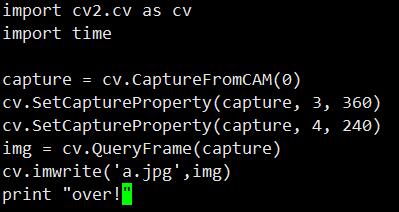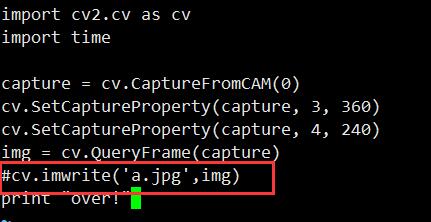37,744
社区成员
 发帖
发帖 与我相关
与我相关 我的任务
我的任务 分享
分享



# 视频分解图片
# 1.load 2.info 3.parse 4.imshow 5.imwrite
import cv2
cap = cv2.VideoCapture("./pop/pop.mp4")
isOpened = cap.isOpened # 判断是否可以打开
print(isOpened)
fps = cap.get(cv2.CAP_PROP_FPS) # 帧率
width = int(cap.get(cv2.CAP_PROP_FRAME_WIDTH)) # 获取宽,高
heigth = int(cap.get(cv2.CAP_PROP_FRAME_HEIGHT))
print(fps,width,heigth)
i = 0
while(isOpened):
if i==10:
break
else:
i = i+1
(flag,frame) = cap.read() # 读取每一种的 flag(表示是否读取成功),frame(表示内容)
fileName = 'pop\img'+str(i)+'.jpg' # pop\为写入的文件夹地址,img表示写入的名称
print(fileName)
if flag == True: # 如果读取图片成功
cv2.imwrite(fileName,frame,[cv2.IMWRITE_JPEG_QUALITY,100]) # 写入图片 fileName:图片名称,frame:图片·内容;最后一个表示写入的图片格式
print('写入图片结束!')